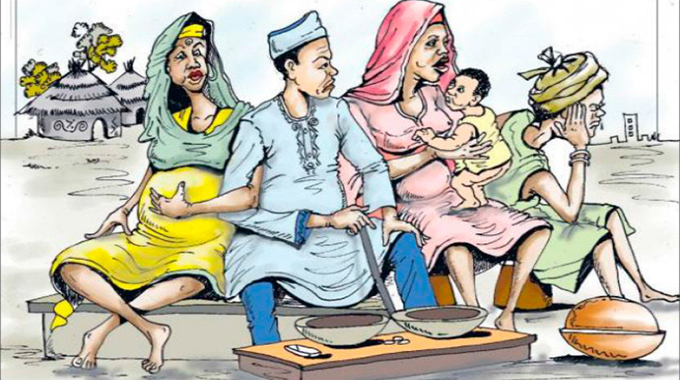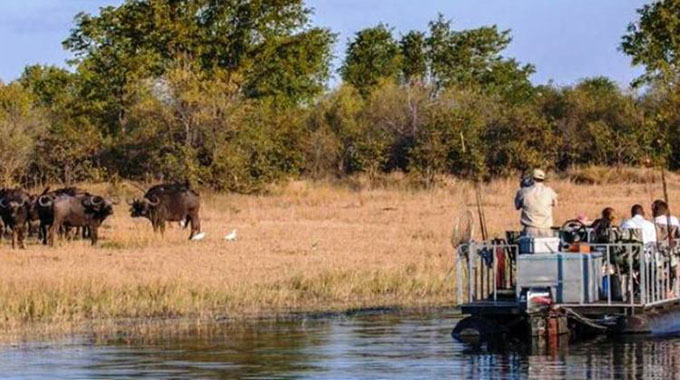When a teacher sold out the struggle
fighting flowed like murky water in a river. Everyday there was the sudden turn and twist of events, like the turning and twisting of the river’s course.
Rhodesian forces were determined to thwart the liberation struggle, albeit their being handled with kid gloves by Britain.
But for the majority blacks, there was no going back. The gallant sons and daughters of Zimbabwe poured out of their homes, leaving behind their families to live in the bush, fighting the brutal war. Victory was certain.
In the bush they had to forego the luxuries of life. They had to forego the warmth of their homes, the hot meals and the routine lunches, dinner and breakfast.
It was sacrifice. Any second, minute, hour and day that passed was a bonus in life, death was in most cases imminent. If it rained, one could not change clothes. The clothes would dry on you.
Meals were not guaranteed. At times, a group would go for days surviving on wild fruits, roots and tubers, yet they had left homes.
One February, freedom fighters were camped along Mupinge River, south of Chimufombo Primary School. The dense riverine forest at the confluence of Chapfeni and Mupinge rivers was an advantage in terms of cover.
At the centre of the thicket was a termite mound where a candelabra tree, mukonde in Shona or umhlonhlo in SiNdebele stood imposingly.
Villagers used this tree as a pointer when bringing food to the freedom fighters who had camped in the undergrowth.
The tree was such a striking feature. Since it is frequently found on rock promontories and termite mounds, there was no doubt that the place it stood had a hard surface needed by the “boys”, as they were called in those days, to keep dry after heavy rains.
The strangely formed tree was of considerable height. Ascending branches with paired spines of about 1,5 cm all over their entire length, were soft and brittle and broke easily to release milky latex, when broken.
This villager’s primary school geography said the structure of the tree was meant to conserve water. This villager’s teacher, a Mr Musonza, who later became longtime headmaster at the school said leaves were absent, since the tree needed to conserve water.
To compensate for the lack of leaves, the tree stem developed four or five flanges, increasing the green surface.
In February, the flowers were green and fleshy. The fruits were round, about the size of peas. But it is the milky latex that comes from the tree, when cut, that made every villager dread it.
This latex was very toxic and could cause intense irritation and even blistering of the skin.
Even cattle driven through dense bush where numbers of these trees grew were known to get severe burns around the eyes, lips and on the face, and severe cases were recorded in which unfortunate beasts had to be destroyed.
Fishermen used the latex as a fish poison. They soaked a bundle of grass in half a cup of latex, then tie the sodden grass to a stone and threw it into a pool. Fishermen would observe fish rising to the surface some 15 minutes or so later, apparently paralysed but still breathing.
A single drop of the latex in the eye caused intense pain and temporary blindness, blistering the eyeball and the cornea, and in extreme cases ended up in loss of the eye.
But despite this, the latex was still used in African medicine, in very small doses, as a drastic purgative, as a cure for dipsomania and as a treatment for cancer.
One morning lightning stabbed the air.
Tree branches shook, swayed and sang. Heavy rains spattered. The boys got rained on silly. They hit in the thicket but still it rained on them.
Unbeknown to them, one of the teachers had sold out and actually had a radio communication system, supplied by the Rhodesian secret service.
The teacher in question knew the movement of the group of boys and the times the villagers went to feed them. Teachers also contributed in terms of food and denim jeans.
As soon as the rains stopped, helicopters hovered above sweeping across the area, while on the ground infantry soldiers surrounded the area. There was a gun battle of severe magnitude.
Cornered and surprised, the boys crossed Mupinge River, southwards to Farms 28 and 29, Nyakapupu, Shamu ne kwaMasakara, taking advantage of the thicket in the Gonyo area. But before that a helicopter was shot down and it crashed into a fireball several kilometres away towards Raffingora and Banket.
One unfortunate freedom fighter was captured. They took him to the mukonde tree and gathered villagers to see how the Rhodesian soldiers treated a gandanga.
They used the latex from the tree to torture him. They smashed the tree and let the milky white liquid deal with his skin.
It visibly itched and irritated him. Intermittently they beat him up with the butts of their guns.
Poked! Beat. Spat. Shoved, kicked, kneed. Shoved, shoved, shoved and kicked him.
He refused to talk. They forced him to drink the liquid. He refused but they forced his mouth open. No one cried. The villagers wanted to cry but they held back. Women wept quietly.
The smell of death engulfed the place. An empty beef cane was used to tap more latex from the tree. They forced the freedom fighter’s mouth open, while holding his hands backwards. The villagers remained breathless. No one knew who would be next after the freedom fighter. They tied his hands backwards.
The beating started again. A white soldier, who had been painted black as disguise, started sweating from beating the freedom fighter. It was like he had found a punching bag.
The paint started peeling off. Starting with the area surrounding the eyes and the ears. Then as rivulets of sweat ran down his cheeks, from the scalp, it eroded the paint. No one spoke. Silence!
It was easy to see the use of the latex as an instrument for murder. The freedom fighter started vomiting. He must have experienced violent abdominal pains.
His stomach rumbled. The freedom fighter rained on himself and is rain not accompanied with loud thunder? He was in pain and wasting away.
Meanwhile, one of the white soldiers, presumably the leader, used radio communication to commandeer a vehicle, a Puma truck towards the position. Two young black soldiers were ordered to drag the freedom fighter towards the car. The helicopters did not stop flying over the area.
School children gathered and saw the black soldiers hoisting — like a bag of luggage — the dead freedom fighter onto the huge truck.
Four soldiers had been killed in battle. They were also carried into the truck. One of the soldiers had been seriously wounded and he screamed for assistance.
They had bandaged him but blood still oozed.
The villagers identified the freedom fighter as Cde Tafirenyika.
They were saddened by his capture. They were saddened by his torture and his subsequent death. It was the work of sellouts.
The teacher had sold out. The following day, the teacher left the school and sought refuge at Gonawapotera, now Guruve Primary School. Sad and fetid.






Comments